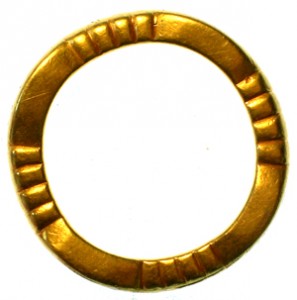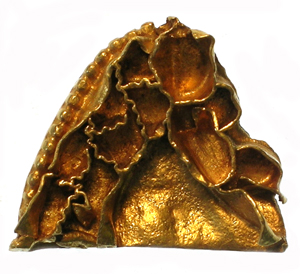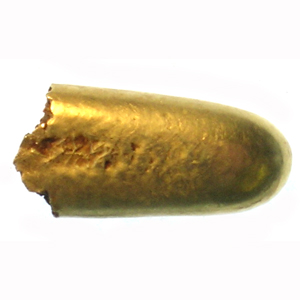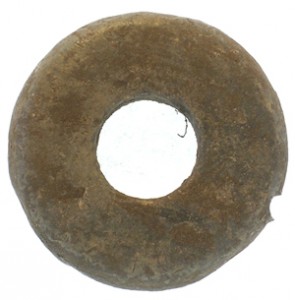Seven pieces make up this fantastic Hoard, many of which are in superb condition after all of this time. A little more about each piece…
Cabachon Ring – An unusually large, complete and spectacular gold ring with a lozenge-shaped bezel set with a garnet gem. Anglo-Saxon pieces of such high quality are extremely rare. It was made to be displayed as a sign of great wealth and status and is in near perfect condition.
Filigree Ring – A very attractive and complete ring with filigree decoration, in excellent condition. Two panels of six filigree scrolls are each separated by a fine filigree line bisecting the bezel. Gold pellets sit in the centre of each scroll and in some of the angles between them.
Niello Finger Ring – A rich and heavy complete gold ring with four enlarged, oval sections decorated with floral and zoomorphic motifs on niello background. The ring is complete and in excellent condition. The designs on the panels, especially the crouching animals, are typical of Trewhiddle Style decoration.
Filigree and Granular Ring – A stunningly beautiful and unusually large gold ring with a round bezel and filigree and granular decoration. The ring is complete and in excellent condition. On the bezel, inside two beaded frames and one upright frame, follow short sections of wire imitating a twisted cable surrounding four spirals held by grooved collars and embellished with gold granules.
Cloisonné Piece - A gold fragment from a once-fine brooch, with elaborate cloisonné cells once containing inlays. One side of the triangular fragment is formed by the beaded rim and another looks like it was torn off the original object. The third side was cut in antiquity. This type of brooch dates to the 7th century.
Gold Ingot – A gold ingot (hack gold), cut down in size in antiquity to probably half its original size. The underside shows impressions from the open-top mould, and the criss-cross pattern on the top is a result of the cooling of the metal, which leads to the formation of crystals. It dates to the Viking period (late 9th to 11th centuries).
Spindle Whorl – A flat lead spindle whorl with a central perforation, found about 4-5 inches from the ring. A spindle whorl would have been used in spinning and producing yarn.







